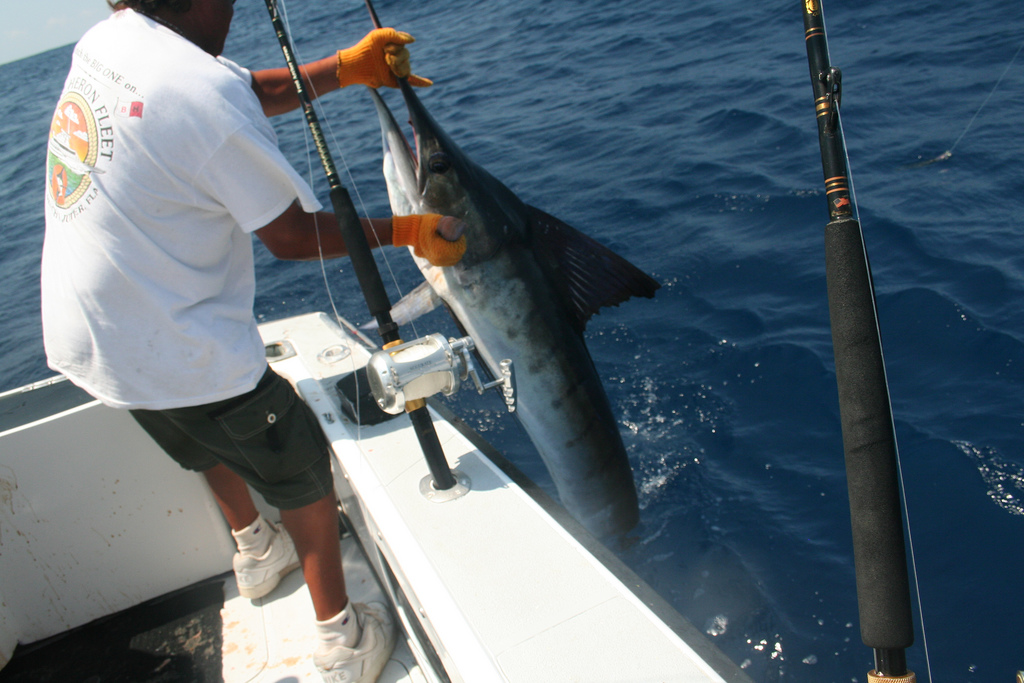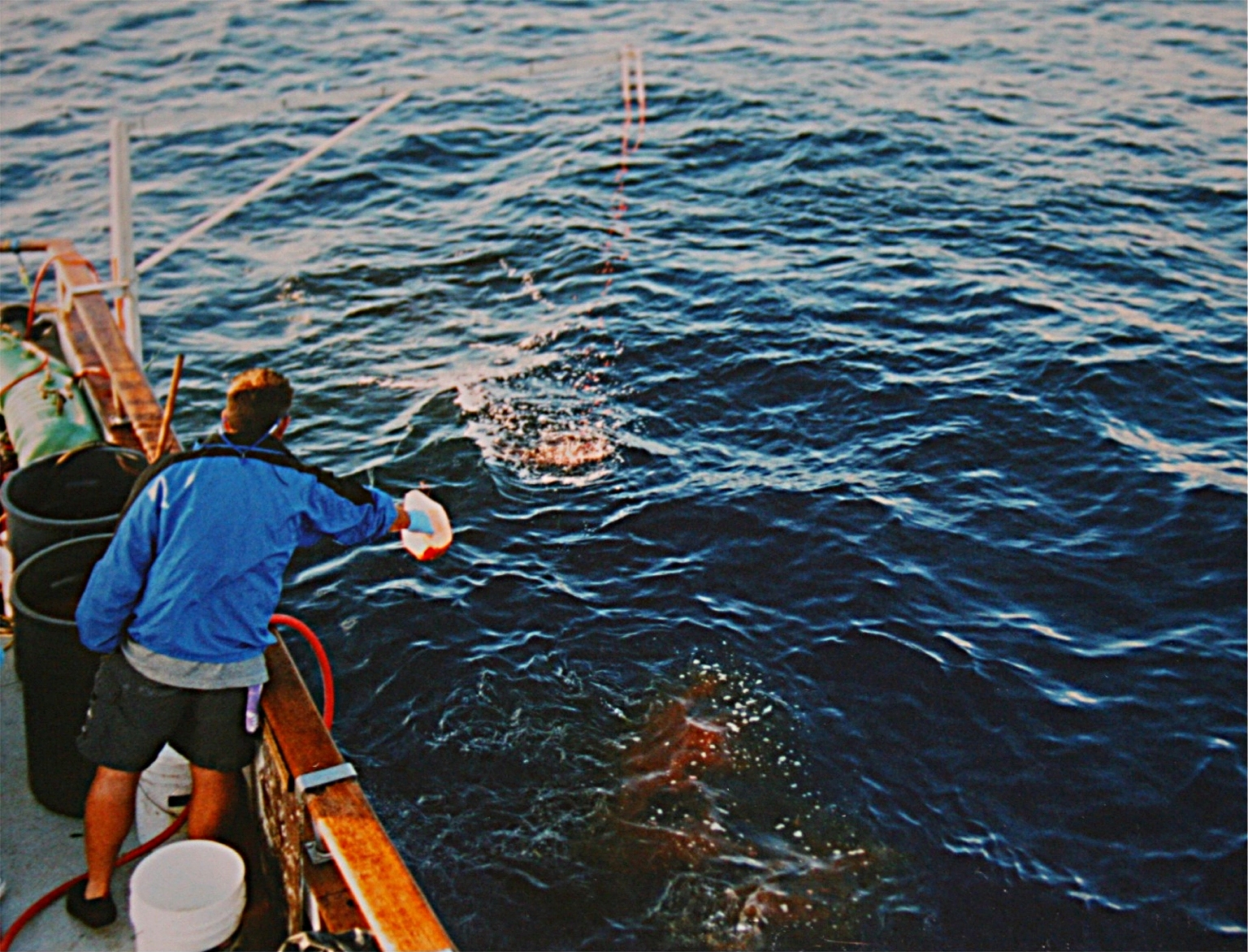|
Bait (luring Substance)
Bait is any appetizing substance (e.g. food) used to attract prey when hunting or fishing, most commonly in the form of animal trapping, trapping (e.g. mousetrap and bird trap), ambushing (e.g. from a hunting blind) and angling. Baiting is a ubiquitous practice in both recreational (especially angling) and commercial fishing, but the use of live food, live bait can be deemed illegal fishing, illegal under certain fisheries law and local jurisdictions. For hunting, however, baiting can often be controversial as it violates the principles of fair chase, although it is still a commonly accepted practice in varmint hunting, culling and pest control. Uses Fishing Baiting is ubiquitously practised to catching fish. Traditionally, Lumbricus terrestris, nightcrawlers, small baitfish, insect adults and larvae have been used as standard fish hook, hookbait, and offals are commonly used as groundbait (a.k.a. chumming) in big-game fishing, blue water fishing. Modern fishermen have als ... [...More Info...] [...Related Items...] OR: [Wikipedia] [Google] [Baidu] |
Varmint Hunting
Varmint hunting or varminting is the practice of hunting vermin — generally small/medium-sized wild mammals or birds — as a means of pest control, rather than as games for food or trophy. The targeted animals are culled because they are considered economically harmful pests to agricultural crops, livestocks or properties; pathogen-carrying hosts/ vectors that transmit cross-species/ zoonotic diseases; or for population control as a mean of protecting other vulnerable species and ecosystems. The term "varminter" may refer to a ''varmint hunter'', or describe the hunting equipments (such as a varmint rifle) either specifically designed or coincidentally suitable for the practice of varmint hunting. Varmint hunters may hunt to exterminate a nuisance animal from their own property, to collect a bounty offered by another landowner or the government, or simply as a hobby. Targets of varmint hunting The term ''varmint'' is a US colloquial term for ''vermin'', th ... [...More Info...] [...Related Items...] OR: [Wikipedia] [Google] [Baidu] |
Big-game Fishing
Big-game fishing, also known as offshore sportfishing, offshore gamefishing or blue-water fishing, is a form of recreational fishing targeting large game fish, usually on a large body of water such as a sea or ocean. History Big-game fishing started as a sport after the invention of the motorboat. Charles Frederick Holder, a marine biologist, and early conservationist, is credited with founding the sport in 1898. He went on to found and lead the Tuna Club of Avalon and went on to publish many articles and books on the subject, noted for their combination of accurate scientific detail with exciting narratives. Purpose-built game fishing boats appeared early in the 20th century. An example is the ''Crete'', in use at Catalina Island, California, in 1915, and shipped to Hawaii the following year. According to a newspaper report at that time, the ''Crete'' had "... a deep cockpit, a chair fitted for landing big fish and leather pockets for placing the pole." Big-game species Th ... [...More Info...] [...Related Items...] OR: [Wikipedia] [Google] [Baidu] |
Chumming
Chumming (List of words having different meanings in American and British English: A–L#C, American English from Powhatan language, Powhatan) is the big game fishing, blue water fishing practice of throwing meat-based groundbait called "chum" into the water in order to lure various marine animals (usually large game fish) to a designated fishing ground, so the target animals are more easily caught by angling, hooking or spearfishing, spearing. Chums typically consist of fresh chunks of fish meat with bone and blood, the scent of which attracts predatory fish, particularly sharks, billfishes, tunas and groupers. In the past, the chum contents have also been made from "offal", the otherwise rejected or unwanted parts of animal slaughter, slaughtered animals such as internal organs. Terminology In Australia and New Zealand, chum is referred to as ''burley'', ''berley'' or ''berleying''. In the United Kingdom, it is also known as ''rubby dubby'' (West Country and Yorkshire), ''shir ... [...More Info...] [...Related Items...] OR: [Wikipedia] [Google] [Baidu] |
Groundbait
Groundbait is a fishing bait that is either thrown or "balled" into the water as an "appetizer" in order to olfactorily attract more fish to a designated area (i.e. fishing ground) for more efficient catching via angling, netting, trapping, or even spearing and shooting. Groundbaits are typically scattered separately from the hook and usually before even casting any rod or net, although in bottom fishing they can be deployed synchronously with hookbaits while contained inside a gradual-release device also attached to the fishing line known as a ''method feeder''. Groundbaits are often used in freshwater coarse fishing (where the target fish are commonly omnivorous or algivorous and might not be easily drawn to the hookbait), and can be custom-made personally by the angler or bulk-purchased from dedicated manufacturers. There are many different recipes of groundbaits that can be used to target specific species of fish. Groundbait can differ by the sizes of the crumbs, type ... [...More Info...] [...Related Items...] OR: [Wikipedia] [Google] [Baidu] |
Offal
Offal (), also called variety meats, pluck or organ meats, is the internal organ (anatomy), organs of a butchered animal. Offal may also refer to the by-products of Milling (grinding), milled grains, such as corn or wheat. Some cultures strongly consider offal consumption to be taboo, while others use it as part of their everyday food, such as lunch meats, or, in many instances, as Delicacy, delicacies. Certain offal dishes—including ''foie gras'' and ''pâté''—are often regarded as gourmet food in the culinary arts. Others remain part of traditional regional cuisine and are consumed especially during holidays; some examples are sweetbread, Jewish chopped liver, Scottish haggis, U.S. chitterlings, and Mexican Menudo (soup), menudo. On the other hand, intestines are traditionally used as casing for sausages. Depending on the context, ''offal'' may refer only to those parts of an animal carcass discarded after butchering or skinning; offal not used directly for human or anim ... [...More Info...] [...Related Items...] OR: [Wikipedia] [Google] [Baidu] |
Fish Hook
A fish hook or fishhook, formerly also called an angle (from Old English ''angol'' and Proto-Germanic ''*angulaz''), is a hook used to catch fish either by piercing and embedding onto the inside of the fish mouth (angling) or, more rarely, by impaling and snagging the external fish body. Fish hooks are normally attached to a line, which tethers the target fish to the angler for retrieval, and are typically dressed with some form of bait or lure that entices the fish to swallow the hook out of its own natural instinct to forage or hunt. Fish hooks have been employed for millennia by fishermen to catch freshwater and saltwater fish. There is an enormous variety of fish hooks in the world of fishing. Sizes, designs, shapes, and materials are all variable depending on the intended purpose of the hook. Fish hooks are manufactured for a range of purposes from general fishing to extremely limited and specialized applications. Fish hooks are designed to hold various types of arti ... [...More Info...] [...Related Items...] OR: [Wikipedia] [Google] [Baidu] |
Larva
A larva (; : larvae ) is a distinct juvenile form many animals undergo before metamorphosis into their next life stage. Animals with indirect development such as insects, some arachnids, amphibians, or cnidarians typically have a larval phase of their life cycle. A larva's appearance is generally very different from the adult form (''e.g.'' caterpillars and butterflies) including different unique structures and organs that do not occur in the adult form. Their diet may also be considerably different. In the case of smaller primitive arachnids, the larval stage differs by having three instead of four pairs of legs. Larvae are frequently adapted to different environments than adults. For example, some larvae such as tadpoles live almost exclusively in aquatic environments but can live outside water as adult frogs. By living in a distinct environment, larvae may be given shelter from predators and reduce competition for resources with the adult population. Animals in the lar ... [...More Info...] [...Related Items...] OR: [Wikipedia] [Google] [Baidu] |
Insect
Insects (from Latin ') are Hexapoda, hexapod invertebrates of the class (biology), class Insecta. They are the largest group within the arthropod phylum. Insects have a chitinous exoskeleton, a three-part body (Insect morphology#Head, head, Thorax (insect anatomy), thorax and abdomen (insect anatomy), abdomen), three pairs of jointed Arthropod leg, legs, compound eyes, and a pair of antenna (biology), antennae. Insects are the most diverse group of animals, with more than a million described species; they represent more than half of all animal species. The insect nervous system consists of a insect brain, brain and a ventral nerve cord. Most insects reproduce Oviparous, by laying eggs. Insects Respiratory system of insects, breathe air through a system of Spiracle (arthropods), paired openings along their sides, connected to Trachea#Invertebrates, small tubes that take air directly to the tissues. The blood therefore does not carry oxygen; it is only partly contained in ves ... [...More Info...] [...Related Items...] OR: [Wikipedia] [Google] [Baidu] |
Baitfish
300px, Feeder Goldfish are common baitfish. Bait fish (or baitfish) are small-sized fish caught and used by anglers as bait to attract larger predatory fish, particularly game fish. Baitfish species are typically those that are common and breed rapidly, making them easy to catch and in abundant supply. Overview Examples of marine bait fish are anchovies, gudgeon, halfbeaks such as ballyhoo, and scad. Some larger fish such as menhaden, flying fish or ladyfish may be considered bait fish in some circles, depending on the size of the gamefish being pursued. Freshwater bait fish include minnows from the carp family (Cyprinidae), sucker family (Catostomidae), topminnows from the killifish suborder (Cyprinodontoidei), shad family ( Clupeidae), sculpin of the order Scorpaeniformes and sunfish family ( Centrarchidae), excluding black basses and crappies. Bait fish can be contrasted with forage fish. ''Bait fish'' is a term used particularly by recreational fishermen, although ... [...More Info...] [...Related Items...] OR: [Wikipedia] [Google] [Baidu] |
Lumbricus Terrestris
''Lumbricus terrestris'' is a large, reddish worm species thought to be native to Western Europe, now widely distributed around the world (along with several other Lumbricidae, lumbricids). In some areas where it is an introduced species, some people consider it to be a significant pest for out-competing native worms. Through much of Europe, it is the largest naturally occurring species of earthworm, typically reaching 20 to 25 cm in length when extended. Common names Because it is widely known, ''L. terrestris'' goes under a variety of common names. In Britain, it is primarily called the common earthworm or lob worm (though the name is also applied to a marine polychaete). In North America, the term nightcrawler (or vitalis) is also used, and more specifically Canadian nightcrawler, referring to the fact that the large majority of these worms sold commercially (usually as fishing bait) are from Southern Ontario. In Canada, it is also called the dew worm, or "Grandaddy E ... [...More Info...] [...Related Items...] OR: [Wikipedia] [Google] [Baidu] |
Fish
A fish (: fish or fishes) is an aquatic animal, aquatic, Anamniotes, anamniotic, gill-bearing vertebrate animal with swimming fish fin, fins and craniate, a hard skull, but lacking limb (anatomy), limbs with digit (anatomy), digits. Fish can be grouped into the more basal (phylogenetics), basal jawless fish and the more common jawed fish, the latter including all extant taxon, living cartilaginous fish, cartilaginous and bony fish, as well as the extinct placoderms and acanthodians. In a break to the long tradition of grouping all fish into a single Class (biology), class (Pisces), modern phylogenetics views fish as a paraphyletic group. Most fish are ectotherm, cold-blooded, their body temperature varying with the surrounding water, though some large nekton, active swimmers like white shark and tuna can hold a higher core temperature. Many fish can communication in aquatic animals#Acoustic, communicate acoustically with each other, such as during courtship displays. The stud ... [...More Info...] [...Related Items...] OR: [Wikipedia] [Google] [Baidu] |








